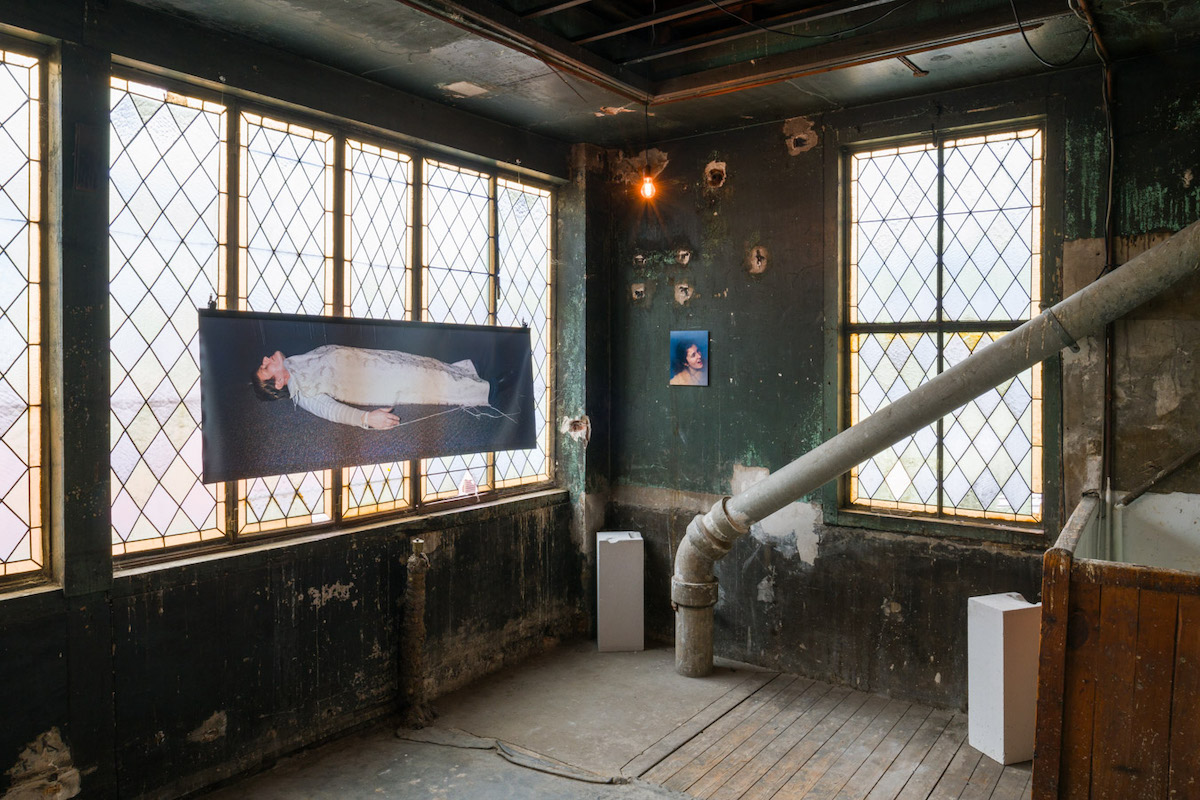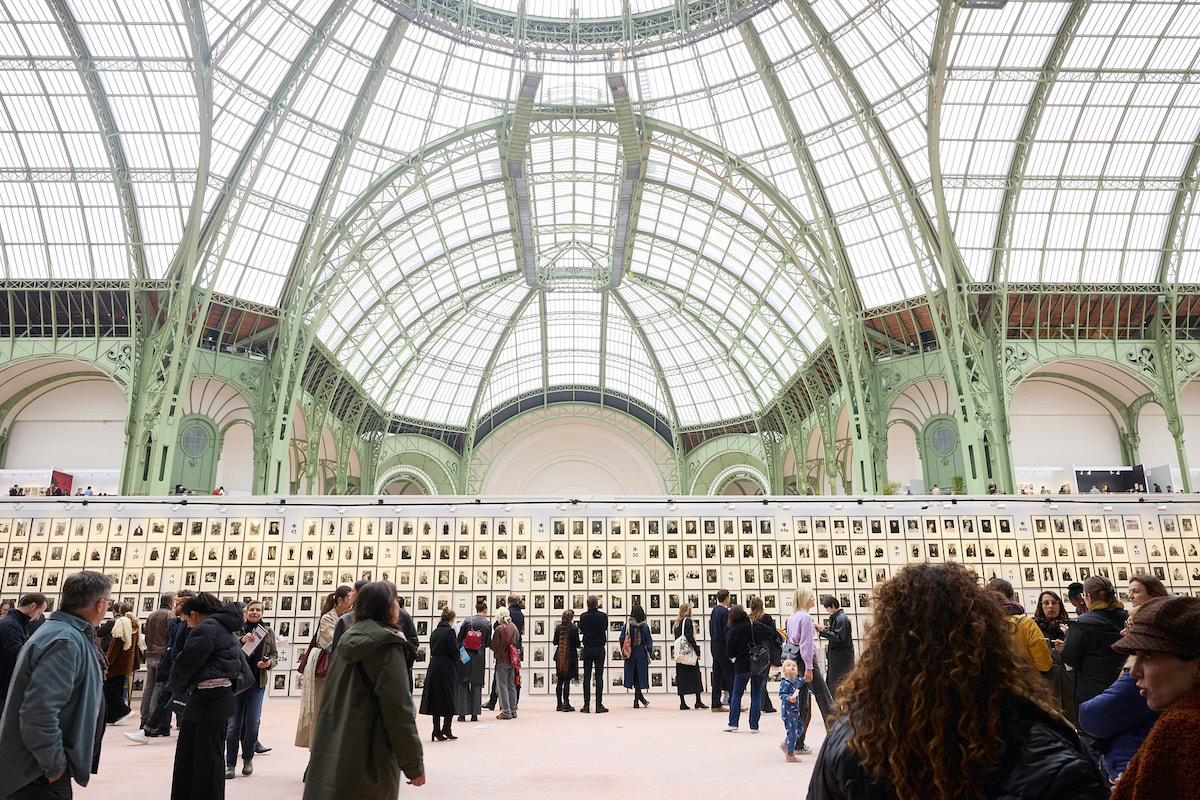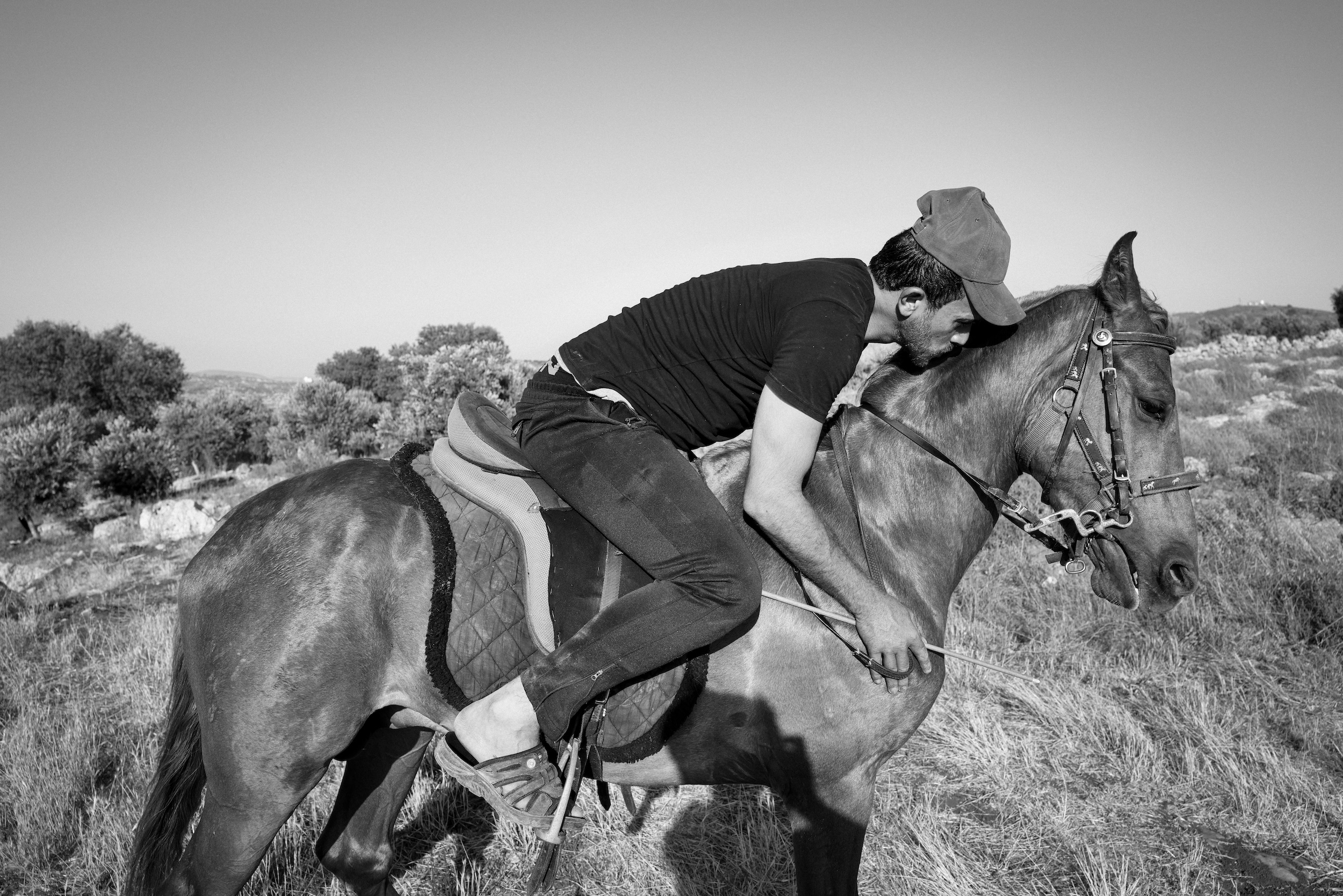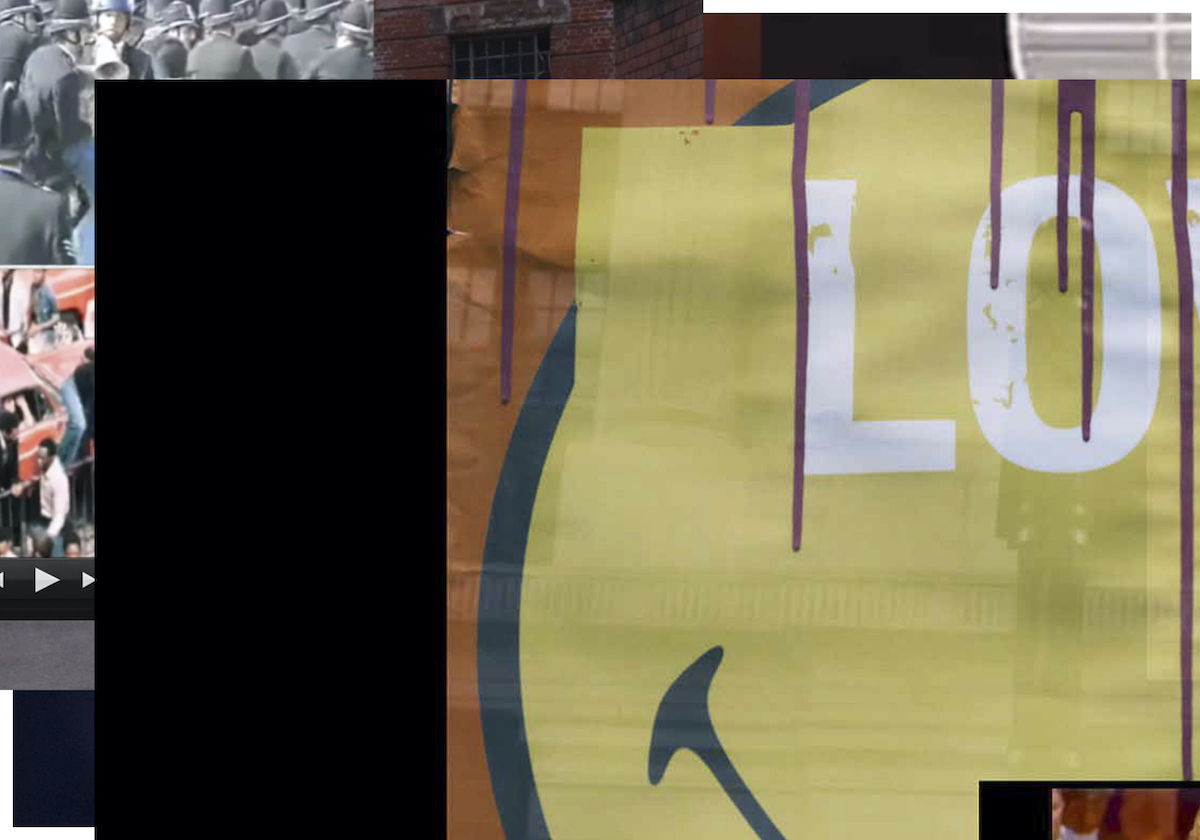The entire set of August Sander’s seminal People of the 20th Century, on show in the Grand Palais at Paris Photo 2024 with Galerie Julian Sander. Installation image during the fair © Florent Drillon
Paris Photo 2024 was a spectacular return to form in and around the main fair
Escaping the Grand Palais Éphémère, Paris Photo 2024 felt more fun than in years, the high glass ceilings of the historic Grand Palais offering space and light, and installations such as August Sander’s entire People of the 20th Century adding to the sense of occasion. Galerie Julian Sander took prime position at the main entrance, but other blue chip players also made notable presentations, with Gagosian showing Avedon and I, for example, curated by Tyler Mitchell and mixing work by the contemporary star and the classic photographer. The accompanying Conversations talk Cutting a Figure, moderated by Aperture magazine’s Brendan Embser, added to the near-festival vibe, with artist and historian Deborah Willis giving historical context to Mitchell’s selection, and speaking on photographing Black life in America more widely.
Paris Photo 2024 was also a place to see work by emerging or previously underestimated artists though, whether in the gallery booths, the public programming, or the Paris Photo-Aperture PhotoBook Awards display. Shining Lights: Black Women Photographers in 1980s-90s Britain, edited by Joy Gregory and published by MACK, was a popular winner of Photography Catalogue of the Year, for example, while Taysir Batniji’s Disruptions, published by Loose Joints, was a deserved Photobook of the Year. Made from 2015-2017, Disruptions collects fragmented, pixellated screenshots taken by the artist during videocalls with his family back home in Gaza, suggesting both their efforts to stay in touch, and the destabilisation of everyday life in Palestine. BJP is proud to have featured this work in our March 2024 issue.
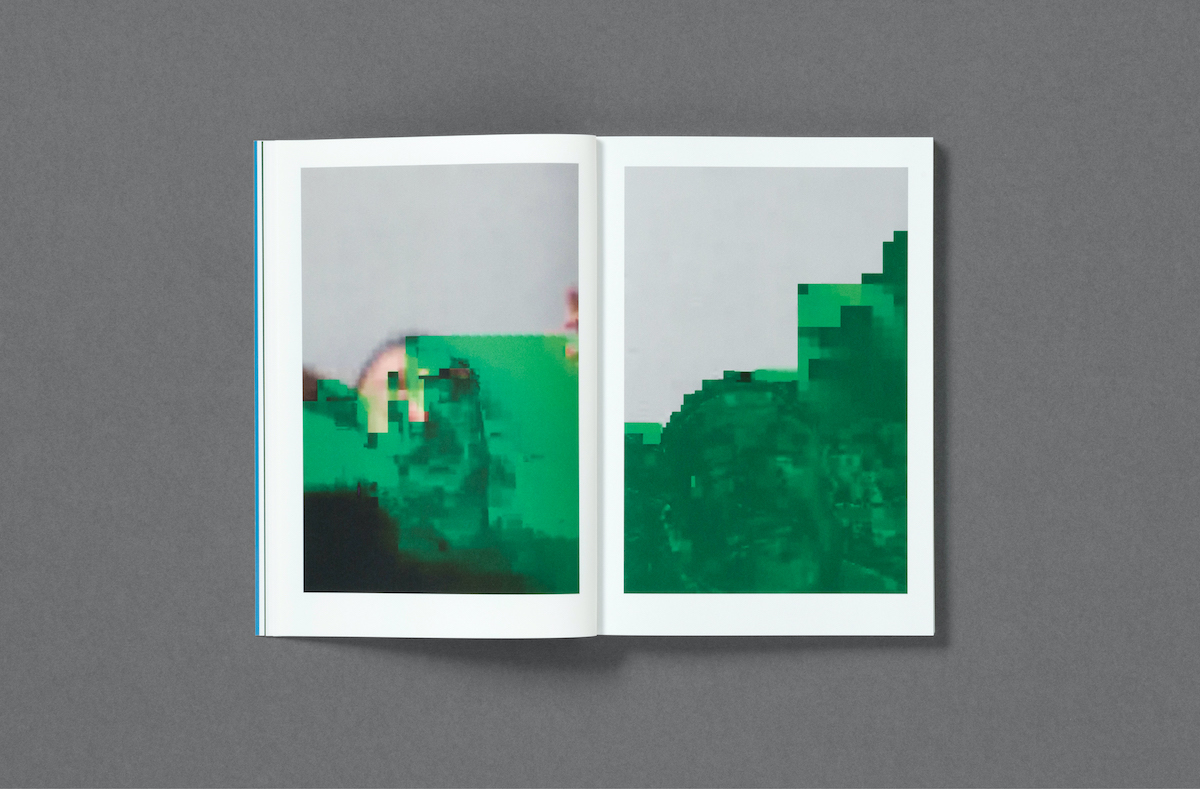
Abdulhamid Kircher’s Rotting From Within, also published by Loose Joints, was nominated for the First Photobook award; it didn’t win, but Kircher’s display with gallery Carlier Gebauer was also a hit. Gathering images from his own family archives (scant as it is), as well as childhood drawings, and photographs from his book, the display made use of a large pillar, entirely covered in images. Navigating this pillar was absorbing, disorientating, and even overwhelming, echoing Kircher’s relationship with his once-estranged father and his complicated family dynamics.
In the Emergence sector, curated by Anna Planas, Zalucky Contemporary’s stand was devoted to Caroline Mauxion, whose multi-media work included both images and sculpture to explore her experience of long-term medical intervention, and the fragility of the human body. Couched in a restrained palette of pinks, peaches, and x-rayesque black-and-white, Mauxion’s installation registered a bracing, humorous, and thought-provoking clash of genres, combining and overlapping approaches to the body more familiar from medical textbooks with echoes of romanticised fine art nudes and franker eroticism (or even pornography).
Meanwhile Anna Jocham was a selected Carte Blanche Student, her project Every Cloud Has a Silver Lining exploring the materiality of photographs by taking images of the everyday and repeatedly enlarging, scanning, and disrupting them. Jocham was at the fair with a dummy book of the project, hopefully picked up by a publisher, and also showing an older project, Through the Looking Glass, considering the circulation of images via an algorithm trained to show misogynistic content. Jocham is currently deepening her practice in fine art at Kunstakademie Düsseldorf, after earning her BA from Folkwang University of the Arts.
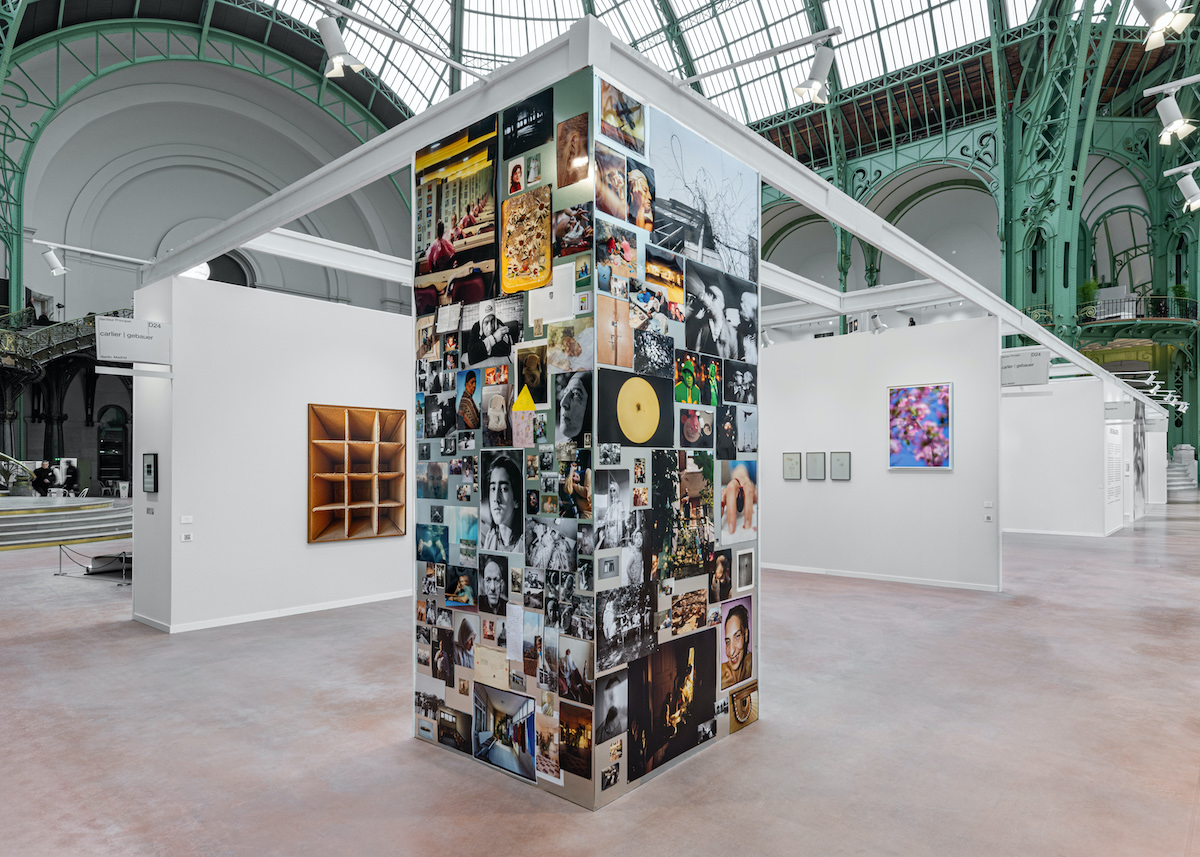
Rotting From Within © Abdulhamid Kircher
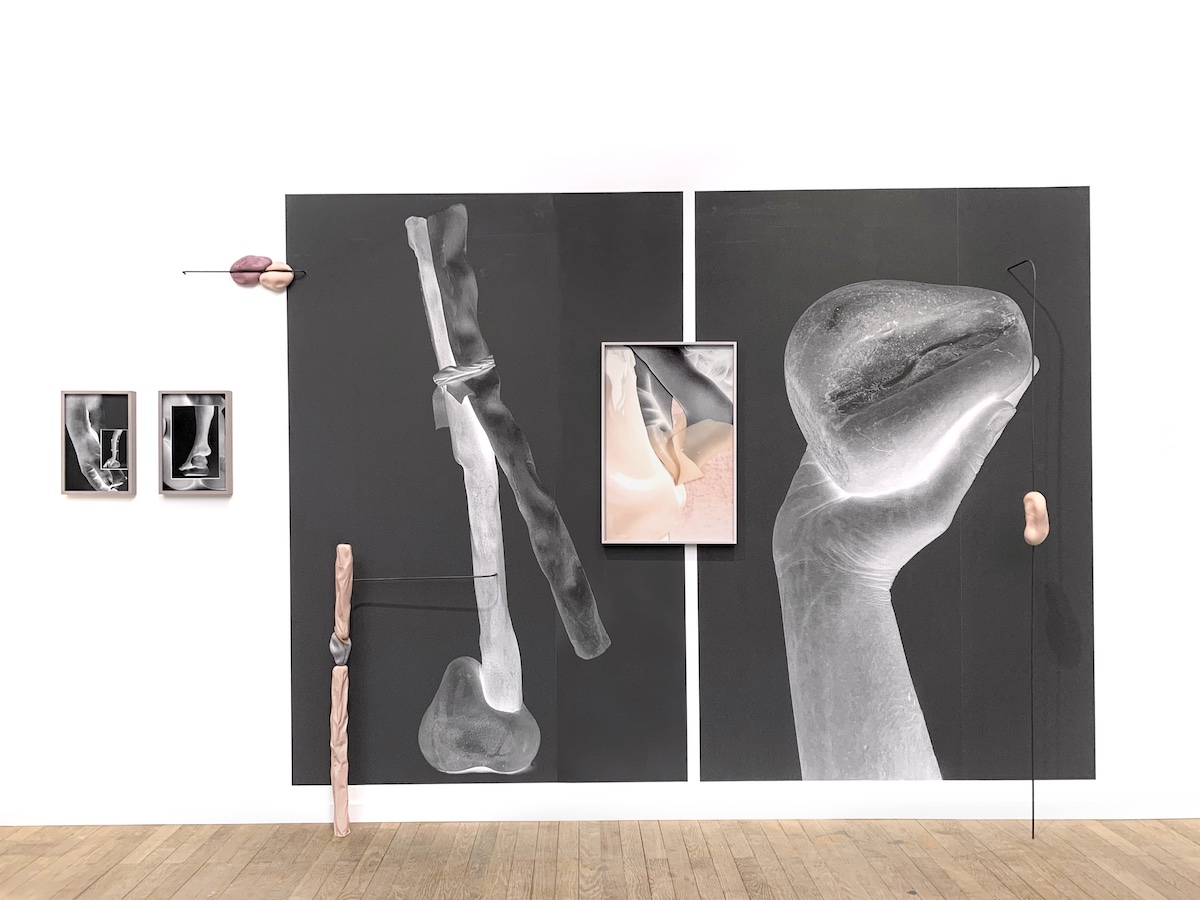
Work by Caroline Mauxion on show in Paris Photo’s Emergences sector with Zalucky Contemporary
Beyond Paris Photo
Paris was also teaming with photography outside the Grand Palais, lending the whole city a photofestival vibe. Regular photobook fairs Offprint and Polycopies and annual Left Bank festival PhotoSaintGermain were joined by a huge group show organised by Reseau LUX, for example, a collective of 23 photography organisations in France, including Paris Photo itself. Reseau LUX #1 took place in an abandoned post office in Pigalle, whose cavernous, rough space offered a quirky riposte to Paris Photo’s sheer swag; led by the fetart collective, which organises the Circulation(s) festival for emerging image-markers, the show played up the DIY aesthetic with appealing hand-drawn graphics and signage.
The sheer character of the place had the potential to overwhelm the art, but the image-makers presented by Festival Planche(s) Contact led the way in handling the space. Olivier Culmann took over a former office – and even desk and computer – to show images of people at work, for example, while Max Pam plastered another cubicle with floor-to-ceiling prints. Jacopo Benassi’s installation was staged inside a huge former safe which proved the perfect foil for his images and paintings of nature, roughly framed in wood, and strapped together with industrial belts. A gay man based in Catholic Italy, Benassi is into punk rock and non-conformism.
Across the river in PhotoSaintGermain, Pooya Abbasian explored a similar sense of dissent in his series Oeil pour Oeil [An Eye for an Eye] at Galerie John Ferrere, part of a group show titled On donne du grain au poule [We give grain to the chickens]. Abbasian’s series is rooted in dreamlike memories from his teenage years in Tehran, when he first tried alcohol and found himself with a group of older men, watching an erotic film on the Turkish channel Cine5 – accessible in Iran but scrambled after midnight to non-subscribers. Approaching a hazy vision of voyeurism and suppressed desire, Abbasian takes fragmented images from Cine5 and weaves them into tapestries, complicating the viewer’s gaze and the Western urge to exoticise.
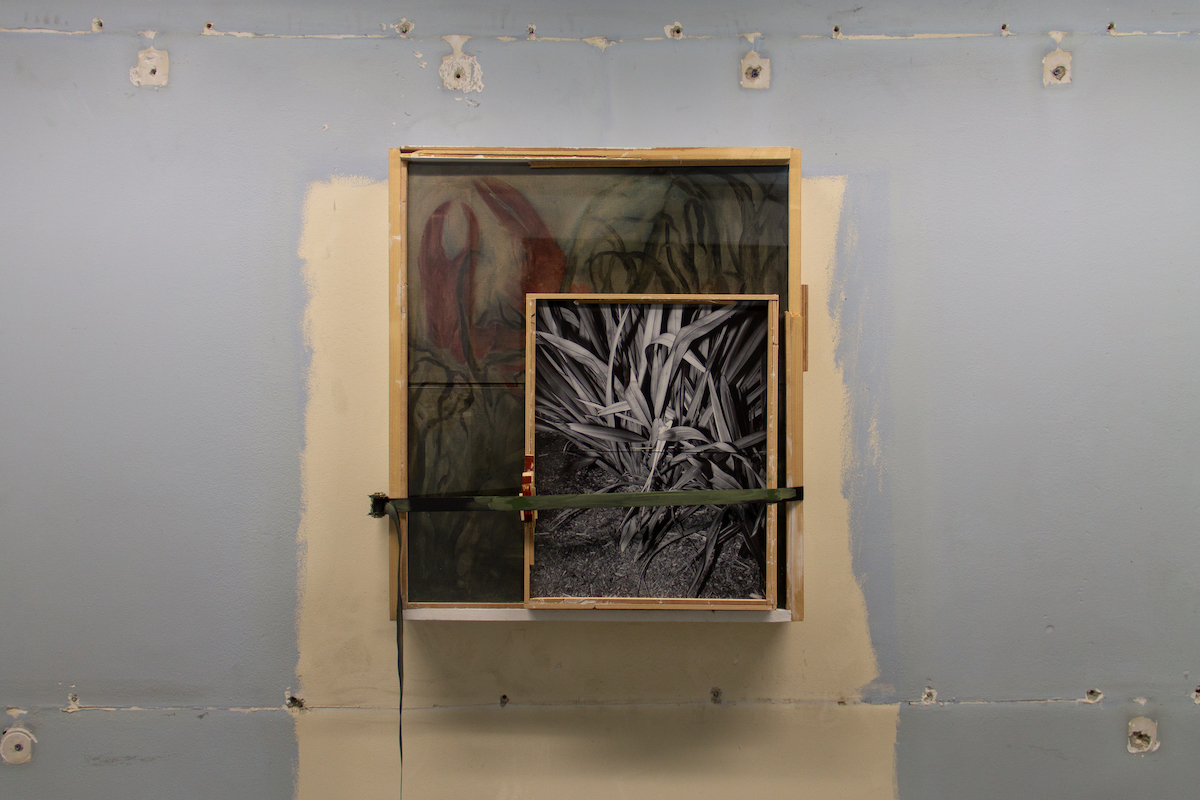
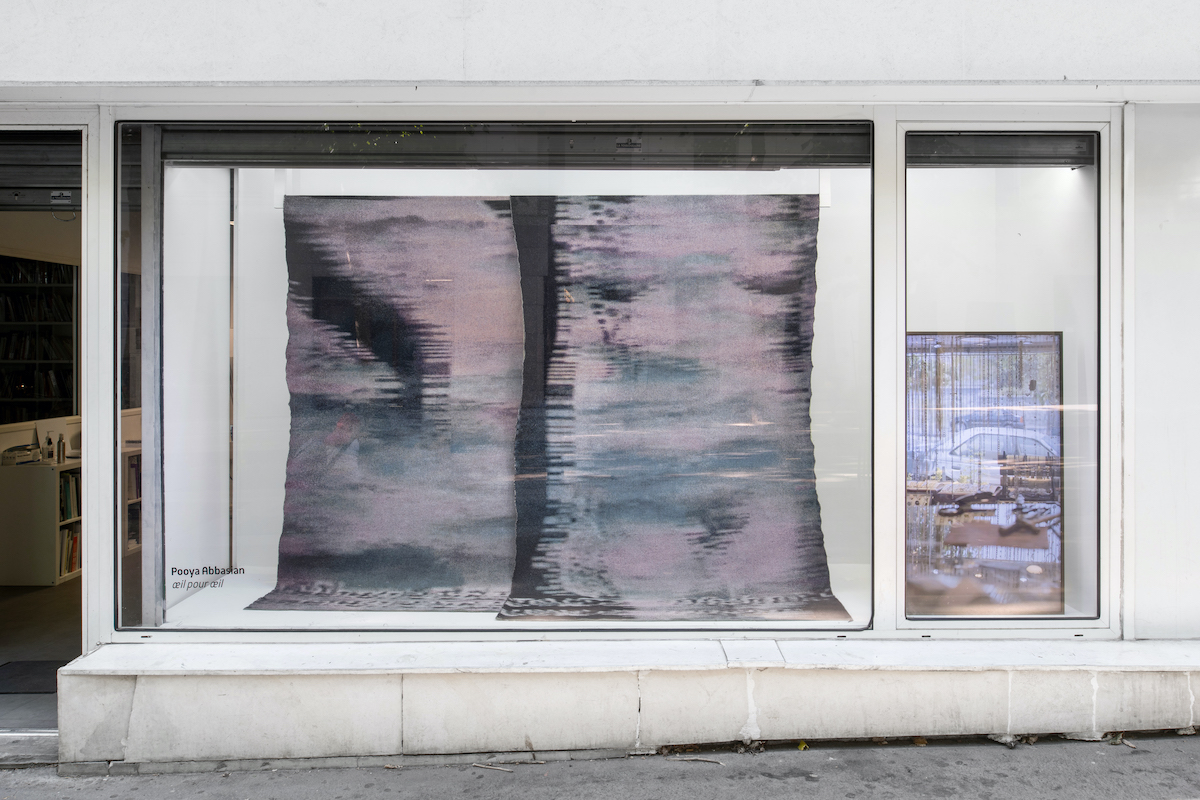
Also part of PhotoSaintGermain was No Woman’s Land, a collaboration between photojournalist Kiana Hayeri and researcher Melissa Cornet made over six months in Afghanistan. Speaking of the position of women and girls following the Taliban’s return in 2021, the series includes portraits and scenes from everyday life, and eerie images of mannequins with their heads in bags (or totally removed). Reminiscent of images in the huge Surrealisme show at Centre Pompidou, the latter suggest both the symbolic and literal removal of women from public space in the country; appropriately, No Woman’s Land was shown in a public installation by the Seine, as well as in the gallery at Réfectoire des Cordeliers.
Supported by Fondation Carmignac and backed by Amnesty International, No Woman’s Land was also part of a growing documentary presence in the French capital during Paris Photo. On the Saturday evening the Night of Photojournalism took place for the second time, for example, talks and screenings organised by Fondation Carmignac, CatchLight, and Dysturb at the Amphithéâtre Saint Côme. Hayeri and Cornet spoke, as did image-makers such as Anastasia Taylor-Lind, Tanya Habjouqa, Tshepiso Mazibuko, Sibusio Bheka, and more. Amandine Lauriol presented her documentation of Marzieh, for example, a 21-year-old woman who fled the Taliban in Afghanistan and is now part of both the Olympic Refugee Team and the French Taekwondo team.
“No Woman’s Land was also part of a growing documentary presence in the French capital during Paris Photo”
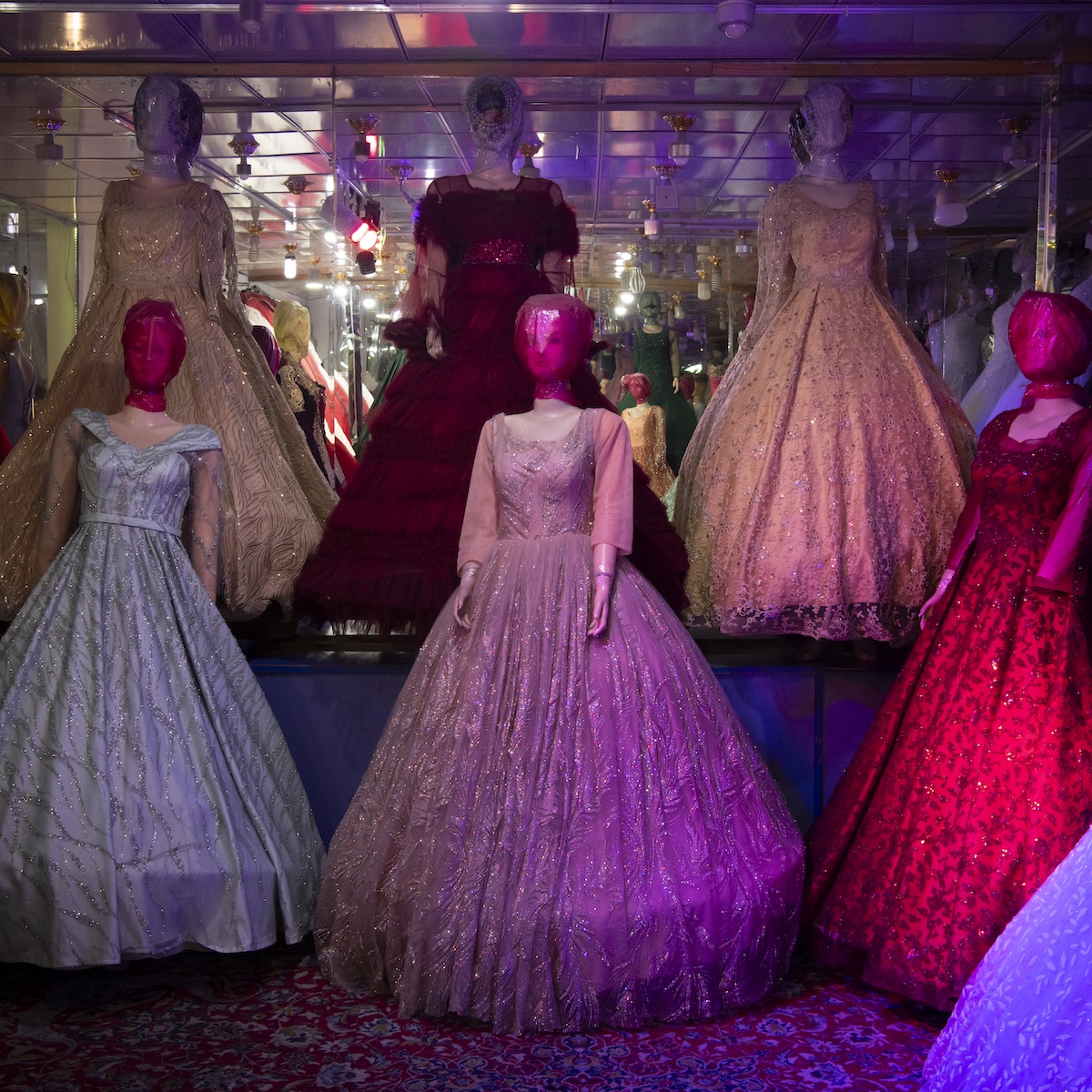
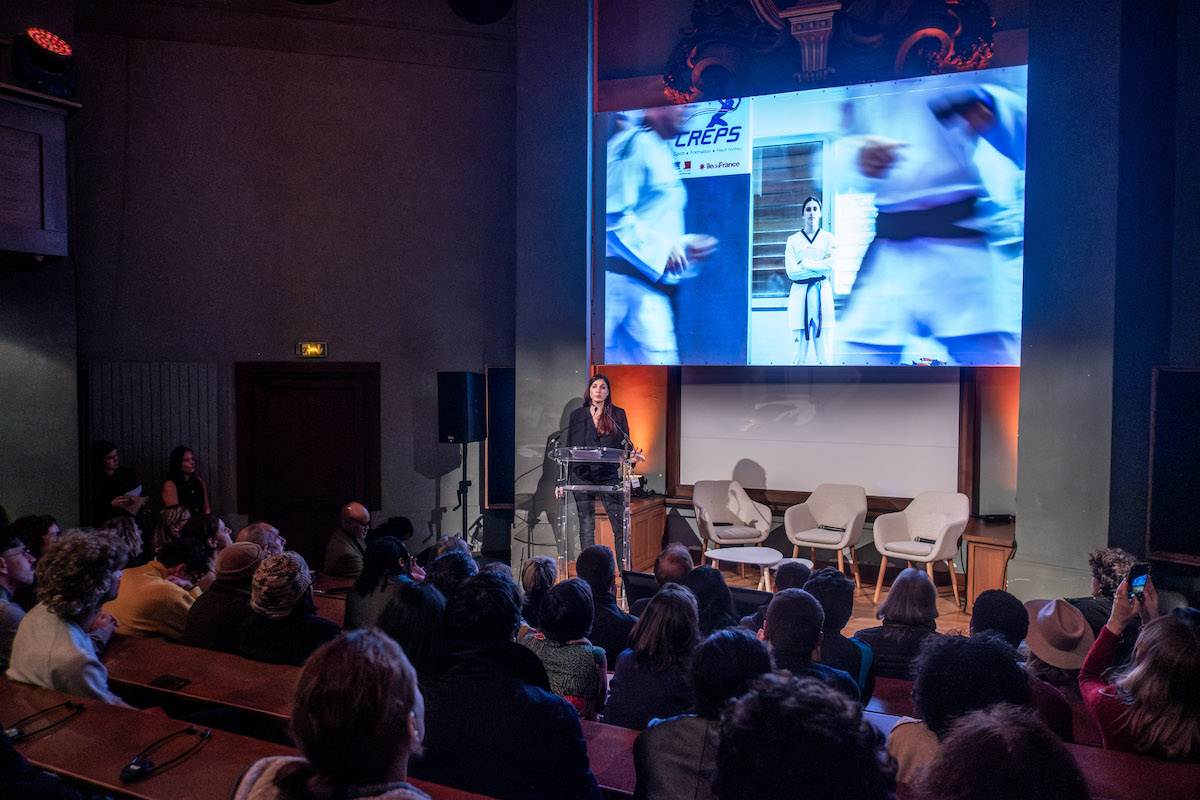
Over at the Offprint book fair, Sakir Khader’s book Dying to Exist was presented; shot by the Dutch-Palestinian in the Jenin refugee camp, it records both the difficulty and beauty of life there, as explored in more detail by Dalia Al-Dujaili in an interview with the Magnum nominee. Also at Offprint, it was good to see Here Press launch Jermaine Francis’ Post-Industrial Dreamscape, following the photographer’s breath-taking installation of this work last year in Paris’ galeriepcp.
Meanwhile at Polycopies, the photobook fair on a boat (and beyond), Mahmoud Khattab’s The dog sat where we parted launched; exploring mandatory military conscription for men over 18 in Egypt, and modern Arab masculinity, it mixes poetry and journal entries with Khattab’s photographs and archival images of men in his family. Khattab was a BJP One to Watch in 2023, so it was great to see this book emerge. Also of note was Marcel Top’s new book Reversed Surveillance, published by Kult Books, which upends complacency around AI by showing how powerful institutions – in this case the French police – use it to categorise and watch us all.
Elsewhere other notable exhibitions were Memoires Croisees by 220 Collective, an Algerian grouping including Abdo Shanan, Sofiane Chemcham, and Celia Bougdal, and Bloom, another group show, featuring Eva Roefs, Otman Qrita and Lewis Khan, each of whom pasted one image large on the wall. Team BJP was also sad to miss Un terrain commun at Galerie Sebastien Lepeuve, featuring work by Chris Hoare, Clementine Schneidermann, Michael Alberry, Bandia Ribeira, Arthur Crestani, Sebastian Bruno and Daragh Soden.
In fact, as at a festival, it was impossible to see everything – particularly as Paris attracted so many international photo-heads this year, allowing for many meetings and informal get-togethers. Team BJP also missed out on big institutional offerings such as Yasuhiro Ishimoto. Des lignes et des corps at Le Bal, Science/Fiction – A Non-History of Plants at the MEP, and La mode en modèles at the Musée des Arts décoratifs. Paris Photo and the surrounding pop-ups have (mostly) packed up and gone home now but, with Ishimoto extended to 22 December, Science/Fiction on show until 19 January, and La mode en modèles until 26 January, we might just have to go back.
